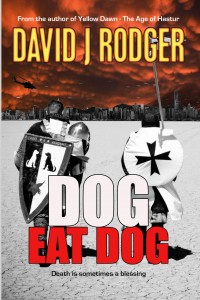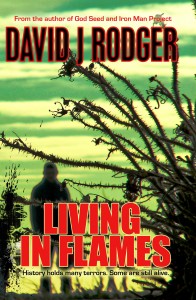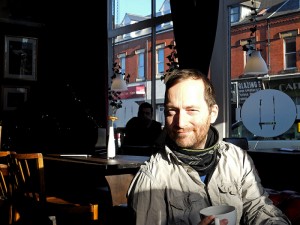The appeal of Call of Cthulhu and the worlds of Lovecraft has never been stronger. Everywhere you seem to look nowadays there’s Cthulhu masks, Cthulhu cakes and even Cthulhu Cosplay (loving those tentacles ladies). You name it, someone’s invoking it and slapping Cthulhu’s name all over it.
Cthulhu-based fiction continues to run rampant and grows ever stronger (just like the lurker beneath the waves himself) so I thought it would be an interesting idea to talk to fellow sci-fi and fantasy writers who work in the field, so we could learn more about each other’s work and explore the strange burden we share. It’s a lonely path sometimes, that of the itinerant scribbler confronting horrors on the page and in the mind and it’s always helpful and insightful to see how fellow obsessives cope/don’t go completely insane.
I thought we might even have some kind of fancy name or handle like the League of Cthulhu, a good cover to explore and publicise each other’s work. If that description fits you and you’d like to submit to the Houlihan interview treatment, use the contact section to mail me and get involved (I promise to be gentle)!
So to kick things off it’s with great pleasure I welcome fellow Cthulhu fictioneer, colleague, friend and all around top bloke David J Rodger as the first guest to my humble little corner of the internet.
David’s been writing since 1996, publishing novels, short stories and even a whole RPG system called Yellow Dawn: The Age of Hastur. For dark, macabre and universally excellent sci-fi and dark fantasy, you should certainly out his work over at both the David J Rodger official site and his personal blog to experience his own unique and compelling blend of fiction.
So in the first part of this interview, we’re going to focus on David’s work and amongst many fascinating insights we discuss origin story, how the modern writer approaches Lovecraft’s darker side, David’s exacting writing methods and explore the dark post-apocalyptic world of Yellow Dawn.
Part two will follow next week and there’ll be some very special prizes on offer, signed by the man himself, if you’d like to tune in.
But for now, on with the words, let’s get cracking.
JH: How did you first get into writing? Why did you choose to write within the mythos?
Djr: Both answers go hand in hand. Always had an active imagination but come 1985 I stepped out of roleplaying with Dungeons & Dragons and into a new game at the time called Call of Cthulhu. Blew the doors of my mind wide open. Playing the game I moved on to read Lovecraft’s work, and then naturally felt the urge to continue his mission and craft my own tales of weird, psychological and cosmic horror.
What do you think has made Lovecraft’s worlds so enduring that so many writers feel compelled to explore them today?
Djr: his work taps into a primal element of human consciousness, peeling away the corners of the ancient tapestries, revealing the doorways to the inner sanctum of the Gods: wherein lies the truth of where we come from, why we are here and who made us. Of course, the trick that Lovecraft pulls off is to actually give us only half-answers that tantalise us and also warn us not to pry too close. Madness lies that way.
What do you feel about the ‘darker’ side of Lovecraft’s work? Accusations of racism, sexism etc. do they matter or was he just a product of his time?
Djr: Lovecraft had a particular set of values and beliefs. His family structure was damaged as was the time period he grew up within. He carried issues around mental health and insecurity about his ability within the wider world. Finding himself alone in Brooklyn living on the perfume trail of his departed wife and struggling, really struggling, to find a stable ledge to make his life work – I guess the darker side of his human nature rose up and found voice through his work, and the activities he may have become involved in. But it’s hard to peer back through those mists of time and judge somebody from our point of view. So I don’t. I focus on his work which has endured incredibly well for nearly a hundred years now.
 You seem immensely focussed and prolific as a writer, putting in some really intensive shifts, can you tell me a bit more about your actual writing process?
You seem immensely focussed and prolific as a writer, putting in some really intensive shifts, can you tell me a bit more about your actual writing process?
Djr: finding the time for “me” was probably the major piece of personal development of my 30s. I didn’t begin a proper career path until I was 27 and when all that work kicked-in I found my personal time dwindling close to nought. I really resented the lack of time I had for “me” and my creative energy.
The summer of 1998 found me resolve these issues. I started a regime of waking up at 4 o’clock in the morning to write. This came about after I read an article by a Hollywood screenwriter who described solving the issue of time management (his main time-sink was his family) by just getting up mega early and doing what needed to be done at the start of his day. My initial attempts required a heavy-duty alarm
clock and resulted in some quite comical consequences as I stumbled about in the darkness – feeling shocked and nauseous – trying to wrestle my mind into a semblance of creative functionality. Spraying shaving foam under my armpits in sleepy confusion. Pouring boiling water from the kettle into my bowl of cereal rather than the mug for coffee. A far cry from how I am today.
For the past few years I’ve been using my so-called Da Vinci method. Otherwise known as polyphasic sleep. Time is gold dust. Every moment I have to myself is precious. I discovered that sleeping for 15 minutes in every hour allows me to maintain an incredible level of focus and energy during creative periods. Of course, you don’t actually sleep. Not really. The alarm goes off after 45 minutes of writing.
You lie down and close your eyes. Your mind whirls. You think about what you’ve just been working on. You problem solve. You relax. You start to drift. And just at the point you’re about to plunge into snoring darkness the alarm goes off and your 15 minutes are up. That’s the moment you need to be strong. To push yourself up with a surge of adrenaline and be excited about the next 45 minutes. However, if the urge to sleep longer is there – and you’ve done enough that day already to say you deserve it, then don’t deny yourself. The system works on balance. Not force.
There are other unexpected benefits to the Da Vinci method. When I’m really in a groove I start waking up at silly o’clock (three or four in the morning) fully alert and raring to go. This is completely different to the disorientated fuzzy-headed nausea of 1998. The wee hours have become my absolute favourite and best productive hours of the day.
 As well as fiction you’ve authored an entire Cthulhu based role-playing system called Yellow Dawn – The Age of Hastur. Tell me a bit more about the setting and game world. How has that grown and developed?
As well as fiction you’ve authored an entire Cthulhu based role-playing system called Yellow Dawn – The Age of Hastur. Tell me a bit more about the setting and game world. How has that grown and developed?
DJR: Yellow Dawn was born from the ashes of a much older game system I’d been developing for years. I started it around 1996, both as a game and as a way to help visualise the “shared universe” I was creating to write my novels within. It had no name as such. I just called it Game. A disparate set of loosely associated systems that allowed me to run Call of Cthulhu scenarios in the near-future cyberpunk frame
of my imagination. It was great. I had a loyal crew of players and for years we indulged in epic adventures. But come 2005 a new player joined the group. Hagen Landsem. He came in cold from the outside world and basically broke Game in his first session. Pedantic son of a bitch highlighted the flaws in having so many systems that didn’t actually mesh together – or the fact there was no consistent structure to the rules. He gained the moniker “Game Breaker Hagen” and has since become one of my best friends. Still pedantic but much less an S-O-B.
About a year went by with no gaming. In a state of shock, I guess. Then I decided to pick through the shattered remains of Game and I realised I still had something. I just needed to knock all the pieces into a consistent shape. But what shape? Here was a golden opportunity to make something big, bold and (for me) entirely new. Some of my favourite gaming experiences are from my teenage years (1980s). This includes Gamma World (LOVED THAT!!) and Warhammer fantasy roleplay with CoC scenarios. I also adore the Mad Max movies and wider concept behind them. Those ingredients came together and ignited the spark that led to the idea of taking my “shared universe” through an apocalyptic event. And why not a Mythos instigated
apocalypse? Hastur is such an incredible chunk of badness. Hard to define. Impossible to pin down. Insidious and infectious. I’ve stated that I think Hastur was a creation of Nyarlathotep intended to wreak madness and suffering on Humankind; but that it actually evolved beyond the original boundaries and now it is something that even Nyarlathotep fears (in a way that only Outer Gods can experience what we define as fear).
So. One day the people of Earth wake up and those in the area of Southern Europe and North Africa witness a Yellow Dawn. It is the culmination of years of dark deeds by agents of the Mythos. People start to die. Some just get sick, slip into a coma and when they wake-up, they’ve changed: at a molecular level. Those that don’t commit suicide or get lynched by frightened mobs become the start of a new race. Part
human, part something else. But then another pathogen, a second wave, emerges from the impact sites around Europe and North Africa and this is much, much worse. People think zombies. They see these shrieking, snarling, flesh eating carriers of the Infection – but it’s a misnomer based on popular culture and movies and video games.
If you want to know what caused Yellow Dawn – and have a chance to stop what’s going to happen next, then grab a copy of the globe-spanning campaign “Shadows of the Quantinex”.
I wrote Yellow Dawn RPG to embrace the cross-genre flavour of my novels. Thrillers with new technology, corporate and political corruption. Warfare between private armies. Action adventure and investigation of the Cthulhu Mythos. The insidious nature of Demons in our reality. Post-apocalyptic culture and survivalism.
One of the USP’s of Yellow Dawn are the rules around interpersonal skills, human interaction and influence. Many players do not have the eloquence, grit or glamour of their imaginary character counterparts. Yellow Dawn provides a raft of consistent mechanics that allow players to rely on the interpersonal skills of their character to get what they need and want. First Contact and NPC Potentials is the bedrock of this. Another USP is the ability to scavenge resources from what’s been left behind and to build stuff from them – depending on the skills any particular character has. It makes for great game play and can give players a lot of satisfaction beyond just killing things or stopping some malevolent plot.
Yellow Dawn has been available since 2008. I launched a major rewrite in 2012 (version 2.5) based on feedback from people who had played it: I shifted the information around to make the setting of Yellow Dawn as stand-alone as possible, to enable GMs to use it with their own RPG systems. The re-write also allowed me to introduce more information about the Infection – and the Influence of Hastur within
the world.
Don’t forget to tune back in for part two of this interview with David J Rodger coming soon with a chance to win some splendid prizes signed by the man himself. If you’d like to become involved in the League of Cthulhu, or for anything lese at all head on over to the contact section of the site and drop me a line. JH

Comments are disabled for this post